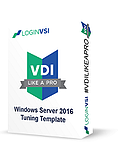Menu
- 130 King Street West, Suite 1800
- P.O. Box 427
- Toronto, ON, Canada M5X 1E3
- (416) 865-3392
- info@triparagon.com
What is VDI?
Virtual Desktop Infrastructure (VDI) refers to the delivery of end-user desktop environments through centralized virtualization infrastructure. Individual desktops are hosted on one or more servers as virtual machines, and consumed via a thin-client, kiosk, mobile device, or existing desktop hardware.
What is the value of VDI?
1. VDI can be an effective way to drive benefits for both end-users and IT administrators, including:
2. VDI is a great use-case for Simplivity Hyperconvergence
Do you need the following capabilities?
What about the User experience:
The success or failure of a VDI project often hinges on user adoption. If users are plagued by constant delays, outages, data loss, or interruptions, they are likely to reject the solution and leave the organization stuck with a costly investment and little to show for it. Relevant factors for user experience include:
And Total Cost and Return on Investment:
If the cost to deliver an adequate user experience is far beyond the expected returns, the project is likely to be considered a failure because of a lack of ROI. Factors that contribute to ROI include:
Consider Project risk and complexity:

SimpliVity’s Unique Advantages for VDI
1. Differentiating performance, with independent validation from Login VSI and ESG

2. Ability to start small and scale to match demand – from pilot to production
3. More desktops on less hardware
4. Enterprise data protection and resiliency
What Customers Using SimpliVity for VDI are saying:
1. “Before SimpliVity, IT was constantly flooded with support tickets due to our VDI performance… SimpliVity has been the ideal solution for us. We were able to:
2. The increasing need for information access and ability to scale at a moment’s notice propelled John’s Riverside Hospital to choose SimpliVity, as opposed to continuing with their legacy architecture.
3. After deploying SimpliVity, MyiOffice saw an improvement in performance of up to 75% and a reduction in application deployment time from 1 month to 1 day
SimpliVity’s reference architectures and Login VSI validated performance testing demonstrate that it can easily scale to 4,000 or more desktops in a single VDI building block, the highest in the hyperconverged category.